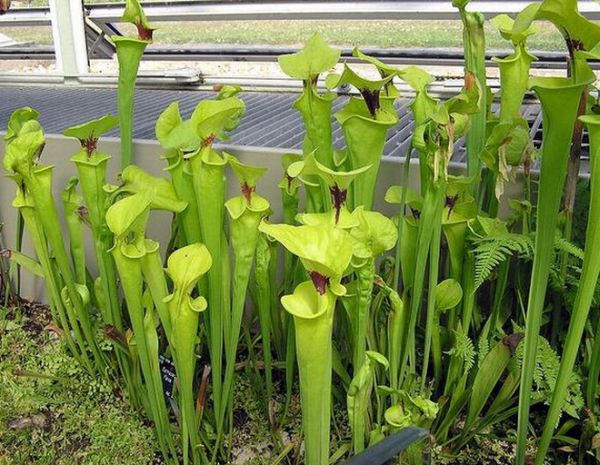
Nepenthes, commonly known as tropical pitcher plants or popular as monkey cups is an example of carnivorous plants, which derive some or most of their nutrients (but not energy) from trapping and consuming animals or protozoan, typically insects and other arthropods. Carnivorous plants grow in places where the soil is thin or poor in nutrients, especially nitrogen, so they get their nutrition by eating meat. It consists of various parts like roots, stem, leaf and flowers. Root systems of these plants tend to be weak and poorly developed. Since the roots function almost entirely as support, the highly acidic bog water doesn’t seem to bother them. The plant has a prostrate stem, which may be several meters long and upto15m or more, and usually 1cm in diameter.
The leaf is the most important part of the pitcher plant. It gets its name from its leaves that form a pitcher-like vessel capable of holding water. The leaf edges have curled around and fused to form a liquid-holding vessel, similar in shape to a cornucopia. The leaves grow from a basal rosette and a “keel” provides structural reinforcement to each leaf so that the opening is always upright. The modified leaves perform the task of taking in nutrients required for photosynthesis. The pitcher plant is composed of a hairy hood that sits atop cup-like yellow-green to dark purple and red-veined leaves that can grow to 17 inches long. The liquid at the bottom of the pitcher plant’s leaf cup contains digestive enzymes that dissolve any insects trapped there. The flowers of the plant are of various color like- deep red, yellow, purple, etc. that attract the flies. The flowers produce pistils, the female parts of their reproductive system that resemble small umbrellas. The pistils provide a level area for insects to collect the pollen from the nearby anthers.
Interesting characteristics
• Pitcher plants are carnivorous plants that have prey-trapping mechanism.
• These carnivorous plants contain traps that can hold up to 50 cubic cm of liquid.
• Each leaf of the pitcher plant resembles a jug or pitcher and has a lid to keep out the rain.
• An insect is lured by the bright color and abundant nectar of the pitcher but the rim has a slippery surface.
• When the insect tries to get the nectar, it loses its footing and easily slides into the pool of liquid at the bottom.
• These plants make use of the proteins obtained from insects when their bodies are ingested.
• It’s interesting to note that despite the digestive enzymes in the liquid within the pitcher, there are animals that actually live in pitcher plants.
Facts



